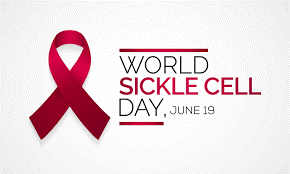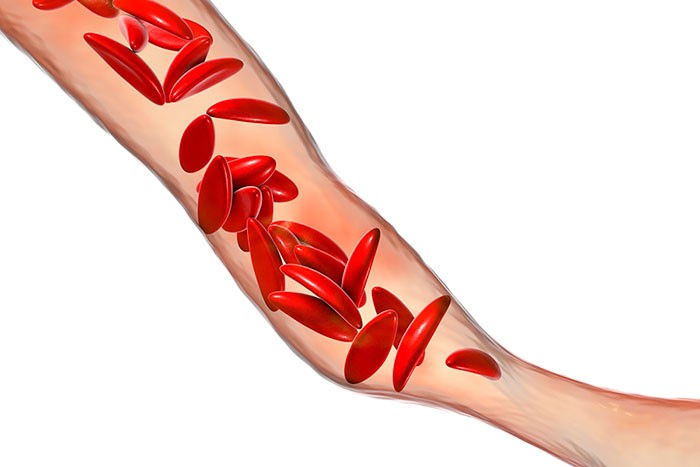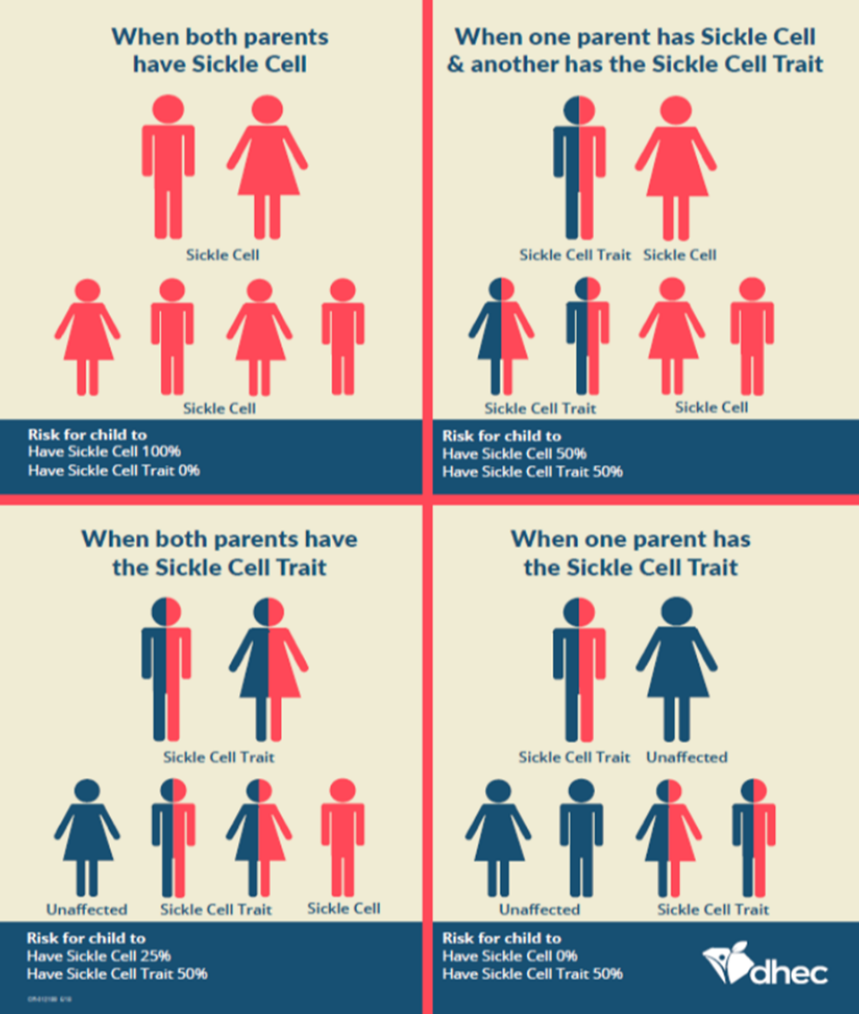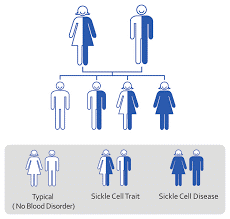
What is Sickle Cell Disease?
- Sickle cell disease (SCD) is a group of inherited red blood cell disorders.
- Red blood cells contain hemoglobin, a protein that carries oxygen.
- Healthy red blood cells are round, and they move through small blood vessels to carry oxygen to all parts of the body.
- In someone who has SCD, the hemoglobin is abnormal, which causes the red blood cells to become hard and sticky and look like a C-shaped farm tool called a “sickle.”
- The sickle cells die early, which causes a constant shortage of red blood cells.
- Also, when they travel through small blood vessels, they get stuck and clog the blood flow.
- This can cause pain and other serious complications (health problems) such as infection, acute chest syndrome and stroke.

What is Sickle Cell Trait?
- People who inherit one sickle cell gene and one normal gene have sickle cell trait (SCT).
- People with SCT usually do not have any of the symptoms of sickle cell disease (SCD), but they can pass the trait on to their children.
How Sickle Cell Trait is Inherited

- If both parents have SCT, there is a 50% (or 1 in 2) chance that any child of theirs also will have SCT, if the child inherits the sickle cell gene from one of the parents.
- Such children will not have symptoms of SCD, but they can pass SCT on to their children.
- If both parents have SCT, there is a 25% (or 1 in 4) chance that any child of theirs will have SCD.
- There is the same 25% (or 1 in 4) chance that the child will not have SCD or SCT.

Diagnosis
- SCT is diagnosed with a simple blood test. People at risk of having SCT can talk with a doctor or health clinic about getting this test.
Complications
- Most people with SCT do not have any symptoms of SCD, although in rare cases people with SCT might experience complications of SCD, such as pain crises.
- In their extreme form, and in rare cases, the following conditions could be harmful for people with SCT:
- Increased pressure in the atmosphere (which can be experienced, for example, while scuba diving).
- Low oxygen levels in the air (which can be experienced, for example, when mountain climbing, exercising extremely hard in military boot camp, or training for an athletic competition).
- Dehydration (for example, when one has too little water in the body).
- High altitudes (which can be experienced, for example, when flying, mountain climbing, or visiting a city at a high altitude).
Data & Statistics on Sickle Cell Disease
- Sickle cell disease (SCD) affects millions of people throughout the world and is particularly common among those whose ancestors came from sub-Saharan Africa; Spanish-speaking regions in the Western Hemisphere (South America, the Caribbean, and Central America); Saudi Arabia; India; and Mediterranean countries such as Turkey, Greece, and Italy.
In the United States
The exact number of people living with SCD in the U.S. is unknown. It is estimated that:
- SCD affects approximately 100,000 Americans.
- SCD occurs among about 1 out of every 365 Black or African American births.
- SCD occurs among about 1 out of every 16,300 Hispanic American births.
- About 1 in 13 Black or African American babies is born with sickle cell trait (SCT).
- SCD occurs more often among people from parts of the world where malaria is or was common.
- It is believed that people who carry the sickle cell trait are less likely to have severe forms of malaria. Learn more about the protective effect of sickle cell trait against malaria.
Mortality
- Sickle cell-related death among Black or African American children younger than 4 years of age fell by 42% from 1999 through 2002.
- This drop coincided with the introduction in 2000 of a vaccine that protects against invasive pneumococcal disease.
- Relative to the rate for the period 1983 through 1986, the SCD mortality rate for the period 1999 through 2002 decreased by:
- 68% at age 0 through 3 years;
- 39% at age 4 through 9 years; and
- 24% at age 10 through 14 years.
- Mortality Among Children with Sickle Cell Disease Identified by Newborn Screening During 1990-1994 California, Illinois, and New York:
- Among the children with Hb SS disease, 1% died as a result of SCD-related causes during the first 3 years of life.
- In California and Illinois, by the end of 1995, the cumulative mortality rate was 1.5 per 100 Black or African American children with SCD.
- The equivalent cumulative mortality rate for all Black or African-American infants born during this period in California and Illinois was 2.0 per 100 Black or African-American newborns.
https://www.cdc.gov/ncbddd/sicklecell/index.html
Links & Resources
Watch
Educational Materials